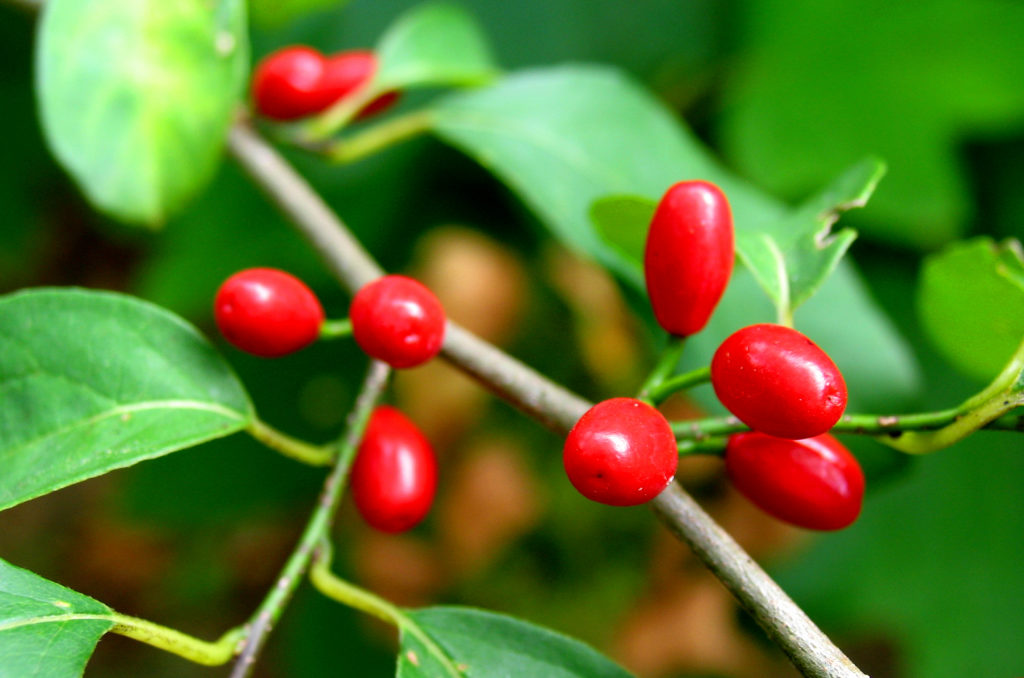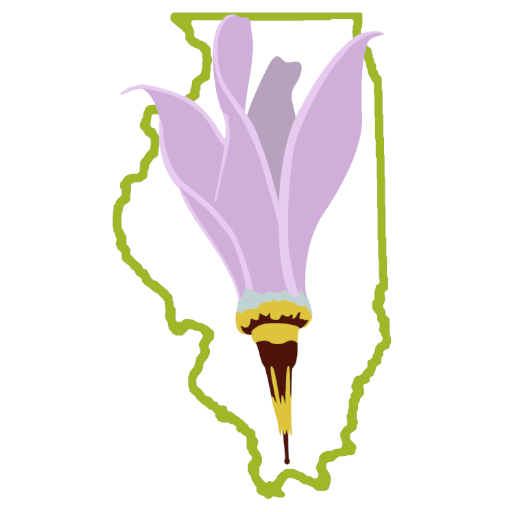Plant Profiles: Spicebush (Lindera benzoin)
-Henry “Weeds” Eilers
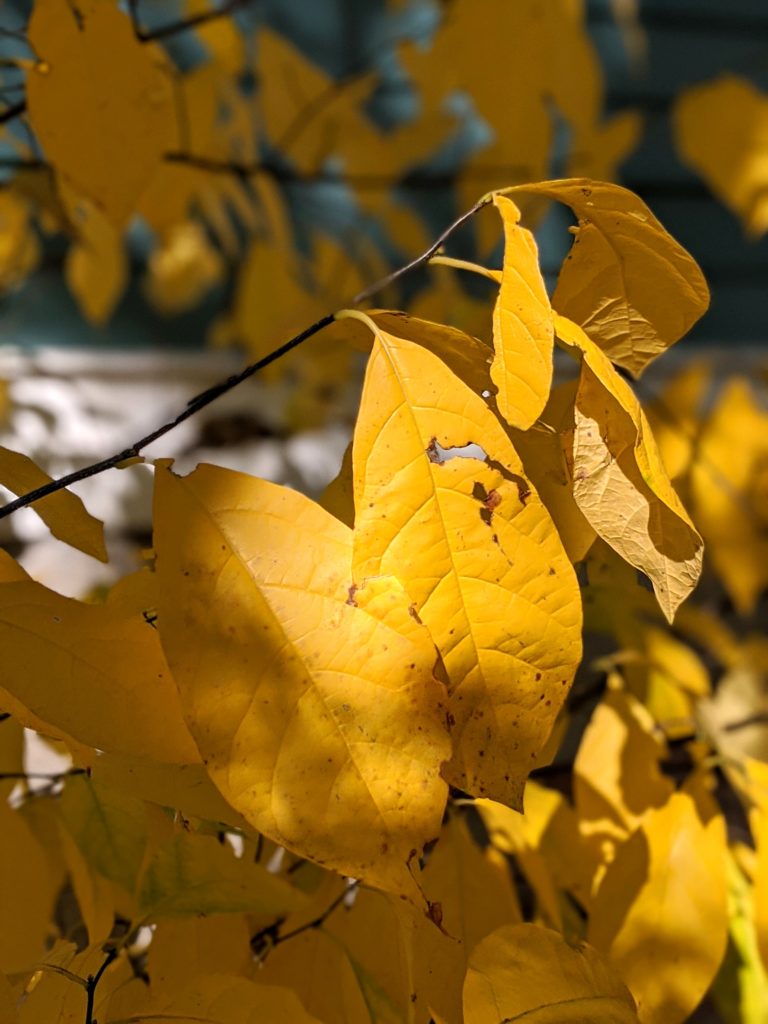
One of our chapter members in October suggested that I do a plant profile column for the INPS newsletter on this native shrub. It had been only a week ago that I was privileged to accompany Nathan Aaron, a skilled botanist who is working in the Meramec Hills section of the Missouri Ozarks. Even this late in the season and on a chilly and dark day it was truly a journey of discovery. A light mist turned to rain and on the way back to Illinois it had become a downpour. We dashed in and out of the truck to look at species rare or unknown to us. The scenery was lovely as well, especially broad, wooded valleys awash in old-gold, enormous expanses of Spicebush. Unfortunately, they were a bit too far down-slope for these old legs; besides it had started to rain. Oh yes, I mentioned that. So, no berries, twigs or foliage.
I just can’t resist plucking a bit on the walk-by without rubbing a bit in my palms and breathing in the delightful fragrance. The shrub has many other attributes. At Bluebell time it helps usher in spring, with its light haze of yellow flowers. The female flowers turn to berries in the fall as described succinctly by M. Dirr in his ‘Manual of Woody Landscape Plants’: “Fruits are lovely! Brilliant, glossy scarlet and singularly eye-catching in the landscape”. The website below gives the usual complete description: www.illinoiswildflowers. That includes associated insects and who has not heard of Spicebush Swallowtail?
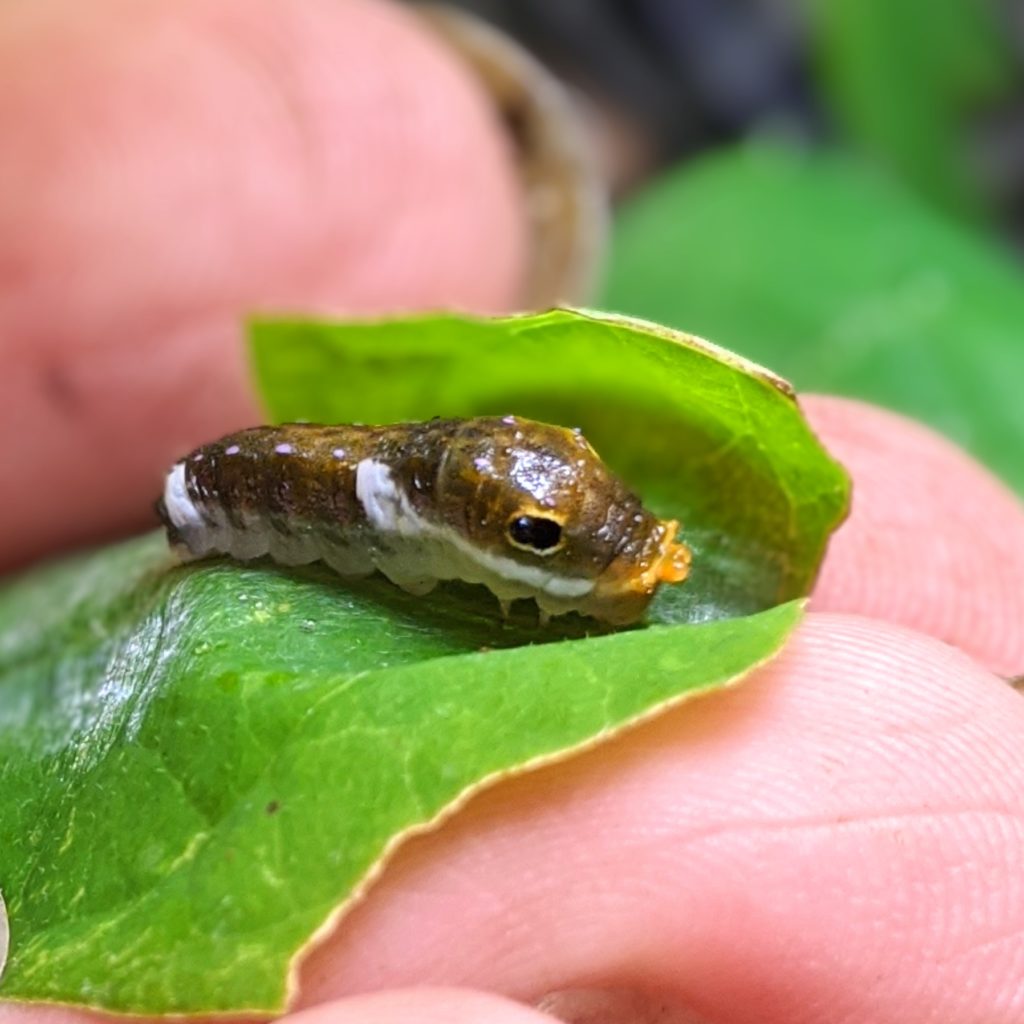
My own Spicebush succumbed to the devastating drought in 2012, along with a host of other lovely plants. No plant lover will forget that terrible year. So, for additional information – or call it citizen research – I decided to make a foray to the Shoal Creek Conservation Area to check on the status of some once lush stands. Spicebush had been common in what had been deeply gouged, erosional scars below once farmed uplands. None were found in the several valley systems explored. Such a complete loss still was a bit of a surprise. Perhaps it should not have been. The species is generally found in floodplain forests. Perhaps it ‘invaded’ these uplands during a favorable period of mesiphication after subsistence farming had ceased or at least been reduced. That might have been in the decades prior to the construction of the immediately adjacent Lake Yaeger, created by damming the Middle Fork of Shoal Creek in the early 1960’s. No doubt Spicebush must have been common down there. It still occurs in the floodplain forest remnants below the dam but not in large numbers. We have seen much recovery in three decades of management. But we will never again see here the large forest trees of the floodplain before the loggers and their draglines ripped all out. I can still remember seeing for several years the stump of a River Birch that may have been over three feet in diameter, rising high above the ditched creek after the logging was completed. It had been a huge tree, impressive to me, a recent immigrant at the time.
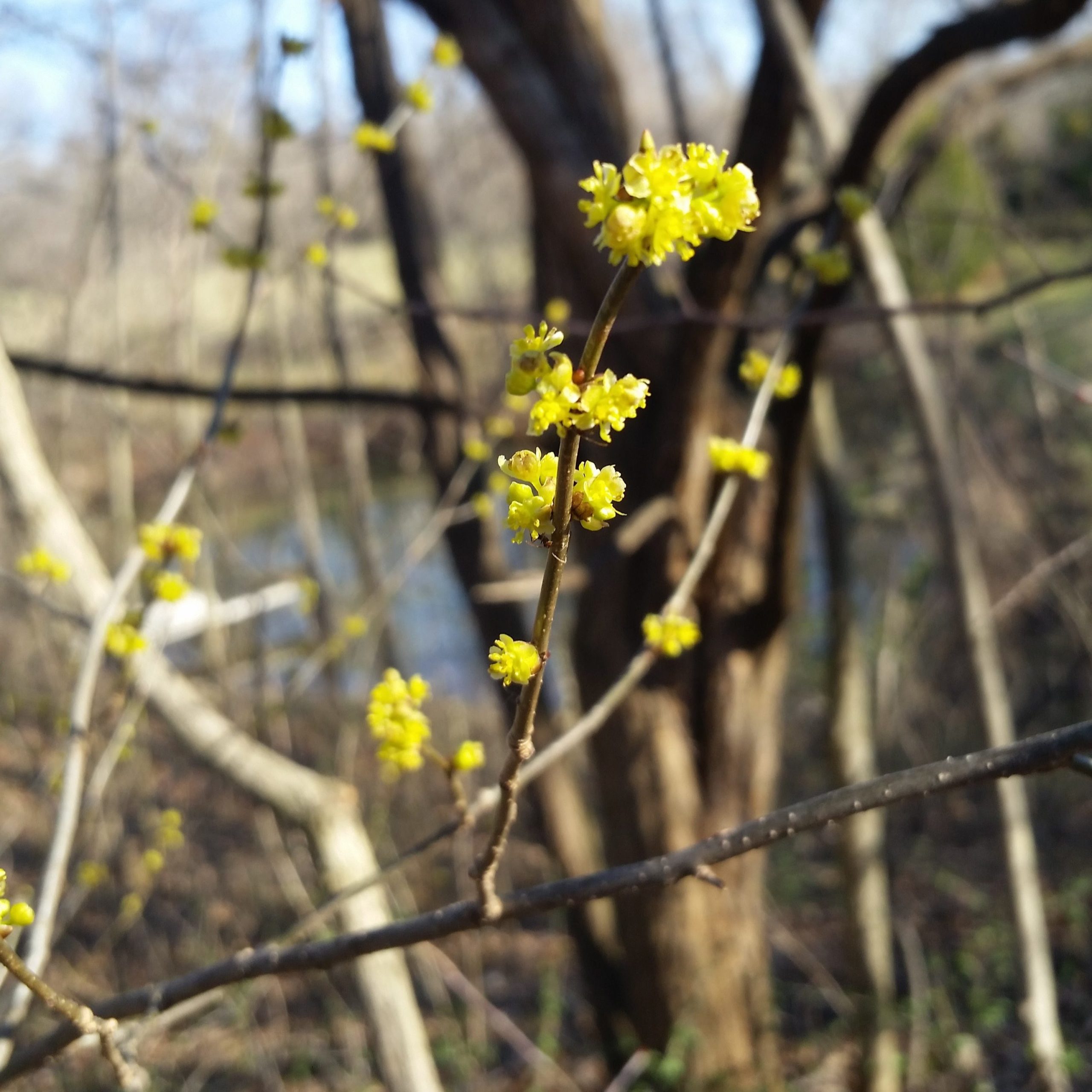
Much of the above speculation is based on Mary Thielgaard-Watts’ book: ‘Reading the Landscape’. But in this case, it is backed up by another account. In the book: ‘What We Save Now’, 1973, edited by Les Line is a contribution by John Madson, titled ‘A Plague on All Your Rivers’. A few paragraphs cover “a small river called Shoal Creek” and its destruction. It is sober reading and I have gone back to it many, many times. There may be less obvious draining and ditching today but the assault on nature continues unabated.
In the next column on woodland understory shrubs, I hope to paint a bit more upbeat picture or at least possibilities. Your comments are appreciated.
